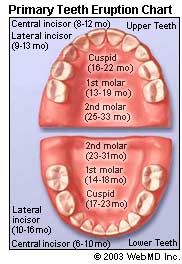Interleukin Genetics, Inc. (OTCQB: ILIU) have announced the online publication of the research study "Patient Stratification for Preventive Dental Care" in Journal of Dental Research. The study provides new insights into the prevention of
periodontitis (gum disease) and the opportunity for significant advancement in the delivery of personalized, preventive dental care. Periodontitis affects 47 percent of the adult population.
The study explored the influence of three key risk factors for periodontal disease - smoking,
diabetes and genetics - on tooth loss given varied frequencies of preventive dental visits that included cleanings. By examining claims data from 5,117 patients without periodontitis throughout a 16 year period and conducting genetic testing, researchers determined that patients with genetic variations of the IL-1 genotype, or one or more other risk factors examined, were at significantly increased risk for tooth loss and therefore require more preventive dental care. The IL-1 genetic variation was the single most prevalent risk factor - nearly one in three Americans carry this genetic variation. This study demonstrates the important opportunity to provide more effective preventive oral care through the use of risk-based patient assessment that includes genetic testing.
Research was conducted under the direction of Dr. William Giannobile, Najjar endowed Professor of Dentistry and Biomedical Engineering, and Chair of the Department of Periodontics and Oral Medicine at the University of Michigan.
Periodontitisis a bacterially induced chronic inflammatory disease that destroys the bone and gum tissues that support the teeth. It is one of the most common chronic diseases of the body. It causes bleeding and swelling of the gums, loose teeth,
bad breath and can ultimately lead to tooth loss. Severe periodontitis has been associated with increased risk for multiple other diseases, including cardiovascular diseases, diabetes and
rheumatoid arthritis. One in four Americans over age of 65 have lost all their teeth.
"Dentistry has long been a leader in the delivery of preventive healthcare to patients. The findings of this study provide dental clinicians with the opportunity to offer personalized, preventive care that is based on new insights into the importance of genetic risk factors," said Dr. Kenneth Kornman, Chief Executive Officer of Interleukin Genetics, which developed the genetics test used in the study.
"Personalized medicine is an important frontier in healthcare driven by the clinical application of genetic and molecular information. Genetic-based risk assessment has long promised to improve prevention and treatment of chronic diseases," said Sir Gordon Duff, Professor Emeritus of Molecular Medicine the University of Sheffield and co-author of the paper. "The findings of this study represent perhaps the first broad scale application of genetics to help prevent a disease that is very prevalent, costly and preventable."
Periodontitis initiation and progression is driven by two factors: bacterial plaque that initiates the disease and the body's inflammatory response to bacteria which, when overly aggressive, causes breakdown of the bone and tissue that support the teeth. This inflammatory response varies greatly within the population and is significantly impacted by individual genetic make-up. Genetic testing can identify patients who have an increased inflammatory response to oral bacteria which significantly increases risk of periodontitis and tooth loss. Smoking and diabetes also contribute significantly to the risk of periodontal disease.
"Ultimately, patients should be evaluated by their dentist regularly and receive needed preventive care before any symptoms of periodontal disease appear. This disease can result in disfiguring bone loss around teeth and has been implicated as a risk factor for multiple systemic conditions that benefit from early stage prevention," said periodontist Donald S. Clem, III, D.D.S., Diplomate, American Board of Periodontology, Past President American Academy of Periodontology. "Historically, we have lacked the prognostic tools to effectively identify patients at greatest risk for periodontitis. This study underscores the need to adopt a genetic, risk-based approach and gives patients a compelling new reason to visit the dentist for a comprehensive periodontal evaluation. As we see with other chronic diseases, identifying and understanding genetic predisposition to disease is a critical component of long term prevention."
Article taken from:
http://www.medicalnewstoday.com/releases/261847.php
 up as ear pain.
up as ear pain. 

